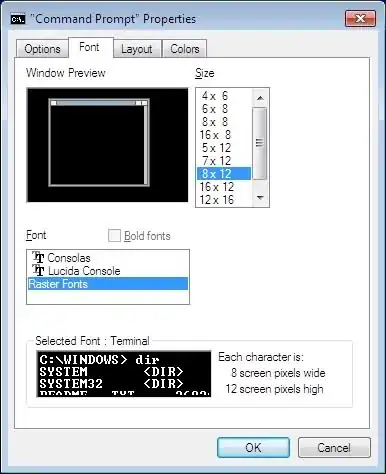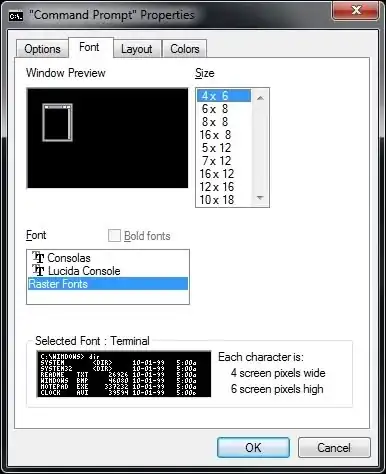Interesting issue - this answer is just an attempt to encircle it rather than an immediate solution:
Section How Windows NT Matches Fonts within Chapter 8 - Fonts of the MS Windows NT Workstation 4.0 Resource Guide qualifies the Terminal font in question as Raster, fixed, display-dependent size, other than for example the MS Sans Serif font, which is qualified as Raster, proportional, 8, 10, 12, 14, 18, 24 (not to speak of the TrueType fonts, which are all scalable of course).
Unfortunately I have been unable to surface any particular font matching algorithm, still a quote from the almost ancient Windows 95 Printing and Fonts: The Basics might add to the picture, see section Fonts Provided for Compatibility:
The user interface in Windows 95
relies on TrueType fonts. However,
three fonts — System, Fixed, and OEM
(or Terminal) — are installed to
support display and output devices to
support other applications that may
require these fonts. Each of these
fonts supports two display types —
8514/a (1024x768) resolution and VGA
(640x480) resolution.
Consequently I suspect the particular font size missing due to non matching characteristics of your remote desktop clients display capabilities, though admittedly this would be quite surprising giving all the other width/height pixel tuples available. Still the fact that the font is missing in PowerShell console too (as per comments to r0cas answer) would back this being a system wide font matching effect rather than an issue of any particular program like cmd.exe.
What should I do to get this font back
in the list?
In case Windows font matching would indeed be causing this as suspected above, you might simply be unable to solve this. Eventually changing your clients display resolution and/or DPI settings could make a difference here though; whether this would be an option at all depends on your particular environment and requirements of course.

